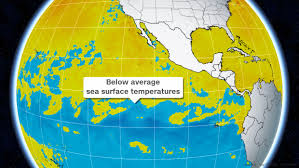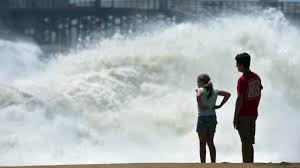By Harmeet Kaur via CNN
(CNN)La Niña is here, which could mean a cold and stormier winter than normal across the North, while the southern tier stays drier, with warmer than average temperatures.
The National Oceanic and Atmospheric Administration announced Thursday the arrival of La Niña, advising that conditions are expected to last through the Northern Hemisphere winter.
La Niña, the counterpart of El Niño, is characterized by below-normal sea surface temperatures in the Pacific Ocean near the equator — a result of shifting wind patterns in the atmosphere.
Both La Niña and El Niño occur every three to five years on average, according to NOAA.

La Niña’s arrival could impact weather around the globe, potentially causing more frequent and stronger hurricanes for the last few months of the Atlantic hurricane season. It also can mean wetter conditions for northern Australia, Indonesia and the Philippines, drier conditions for western South America and cooler conditions for western Africa.
NOAA issued a La Niña watch in July, warning that La Niña could form in the fall. The agency factored in the likelihood of La Niña forming in its outlook on the 2020 hurricane season, forecasting last month that it would be “extremely active.”
La Niña weakens winds between the ocean surface and the upper levels of the atmosphere, which allows hurricanes to more easily grow. It also impacts the position of the jet stream over North America, which can influence the track and severity of winter storms. This tends to make for wetter and cooler winters along the Pacific Northwest and areas currently facing major wildfires.
La Niña and climate change
While El Niño and La Niña events are regular aspects of global weather patterns, increased global temperatures may temper or change their effects.
“La Niña tends to pull down global temperatures, but in recent years we have been warming the planet so fast, it’s like hitting a small speed bump at 80 mph — it barely even registers,” CNN meteorologist Brandon Miller said in July. Read more from CNN.




